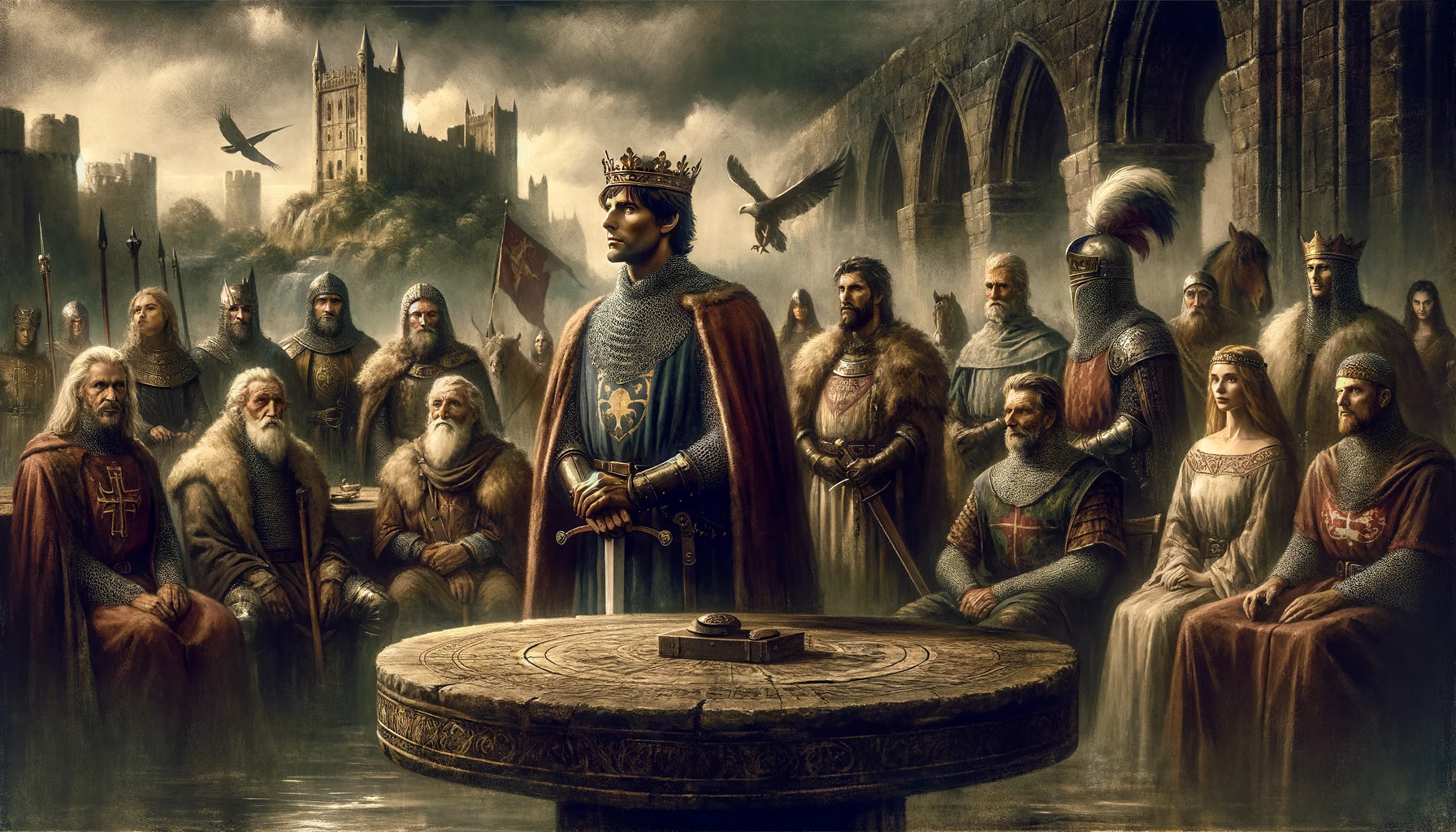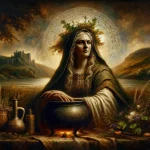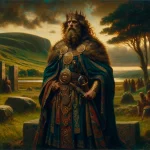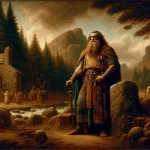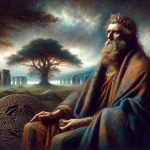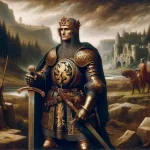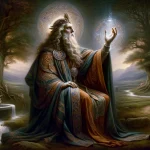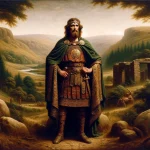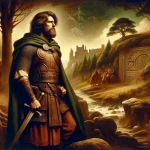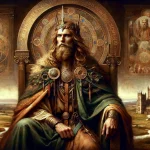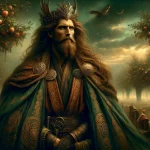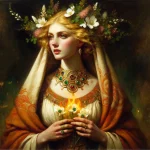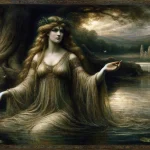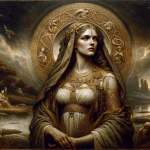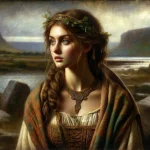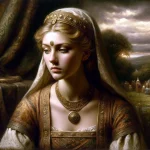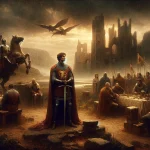In pre-Galfridian literature, Arthur is portrayed primarily as a defender of his land against various threats, both from within and without. This includes his roles as a giant and witch slayer, a hunter of monstrous beasts like giant boars, a savage cat monster, and a winged serpent or dragon, and as a liberator of prisoners. These characteristics of Arthur, grounded in early sources such as the poems “Pa Gur” and “Preiddeu Annwn,” the Triads, the lives of saints, and the “Miribilia” section of the “Historia Brittonum,” position him within the realm of mythology, akin to figures like Fionn, rather than within historical reality. This mythological depiction diverges significantly from the later ‘historical’ view of Arthur found in texts such as the “Historia Brittonum” and the “Annales Cambriae,” which celebrate him as a victorious leader against the Saxons—a depiction not supported by the majority of sources, indicating a deep-rooted mythological rather than historical origin for Arthur.
- King Arthur himself, while a figure of pan-European legend, is deeply rooted in Welsh folklore, where he is often depicted as a warrior fighting against supernatural enemies and Saxons, rather than the chivalric king found in later French romances.
- Merlin (Myrddin), known in Welsh tradition as Myrddin Wyllt (Merlin the Wild), is a figure of prophecy and magic. Unlike the advisor to Arthur in later tales, the Welsh Myrddin is a bard driven mad by the horrors of war, who later acquires the gift of prophecy.
- Gwenhwyfar (Guinevere), Arthur’s queen, has her roots in Welsh literature as well, though her character and the stories associated with her—such as her abduction and rescue—vary significantly across different texts.
- Sir Kay (Cai), known for his acid tongue and quick wit, is portrayed more heroically in Welsh stories than in later Arthurian romances. He is often depicted as Arthur’s foster brother and a formidable warrior.
- Morgan le Fay, known in Welsh as Morgain or Morgana, appears in Welsh stories as a complex character: sometimes a healer, sometimes a foe of Arthur, embodying the enigmatic nature of the supernatural in these early tales.
- Owain (Yvain), the hero of “Owain, or the Lady of the Fountain,” a tale from the Mabinogion, is a knight of Arthur’s court who embarks on a quest that blends chivalric adventure with themes of love and loss. His story reflects the integration of Arthurian characters into Welsh mythic landscapes.
- Peredur, another knight from the Mabinogion, whose tale “Peredur son of Efrog” shares elements with the Grail quests of continental Arthurian romance but is deeply rooted in Welsh mythological motifs and settings.
- Bladud: A legendary British king and the father of King Lear, known from medieval chronicles. He is said to have founded the city of Bath and created its hot springs through magical means.
- Culhwch: The protagonist of the Welsh Arthurian tale “Culhwch and Olwen.” He is notable for his quest to win Olwen’s hand in marriage, which leads him to seek the help of King Arthur and his knights.
- Gwyddno Garanhir: A legendary king associated with the sunken kingdom of Cantre’r Gwaelod in Welsh mythology. He is often depicted as a figure of wealth and tragedy due to the loss of his lands to the sea.
- Lludd Llaw Ereint: Also known as King Lud, a legendary hero who is said to have fortified and expanded the city of London, which was purportedly named after him (Lud’s Gate, or Ludgate).
- Mabon ap Modron: A figure from Welsh mythology and Arthurian legend, known as the “Great Son” of the Mother Goddess Modron. He is a deity of youth, freedom, and the hunt, often associated with the divine son archetype.
- Taliesin: A famed bard and poet in Welsh mythology and history, said to possess the gift of prophecy and to have served at the courts of several British kings, including Arthur.
- Ysbaddaden: A giant and the chief antagonist in the tale “Culhwch and Olwen,” known for setting impossible tasks for Culhwch to complete before he can marry Ysbaddaden’s daughter, Olwen.
- Beli Mawr, son of Manogan: A mythological figure considered to be an ancestor of many Welsh dynasties. Beli Mawr is often depicted as a powerful king and a progenitor of gods and heroes in Welsh legends.
- Ceridwen: A enchantress or goddess from Welsh mythology, best known for her cauldron of poetic inspiration. She is the mother of the bard Taliesin, whom she bore after her magical potion was accidentally consumed by Gwion Bach.
- Creiddylad: Sometimes regarded as the Welsh equivalent of Persephone, she is a figure associated with love and spring. Creiddylad is the subject of a rivalry between two suitors, Gwythyr and Gwyn ap Nudd, and her story is linked to themes of seasonal change and rebirth.
- Creirwy: Daughter of Ceridwen and sister to Afagddu, Creirwy is often described as one of the most beautiful maidens in Welsh mythology, contrasting with her brother’s ugliness.
- Modron: A mother goddess figure in Welsh mythology, often identified with the Gaulish deity Matrona. She is the mother of Mabon ap Modron and represents fertility and maternity.
- Nimue, Lady of the Lake: A pivotal figure in Arthurian legend, Nimue is best known for giving King Arthur his sword, Excalibur, and for her role in Merlin’s fate, either as his protégé or captor.
- Olwen: The heroine of “Culhwch and Olwen,” famed for her beauty and the trail of white clover that grows in her wake. She is the daughter of the giant Ysbaddaden and Culhwch’s love interest.
- Afallach: A figure in Welsh tradition, often associated with the Otherworld and Avalon. He is sometimes considered to be related to or a representation of the apple tree, symbolizing abundance and the afterlife.
These characters and their tales from Welsh mythology enrich the Arthurian legends, adding layers of depth and complexity that reflect the ancient Celtic origins of these stories. The Welsh contributions emphasize more mystical and epic elements, portraying a world where magic, prophecy, and the struggle against formidable foes, both human and otherworldly, highlight the heroism and tragedy of the Arthurian world.
